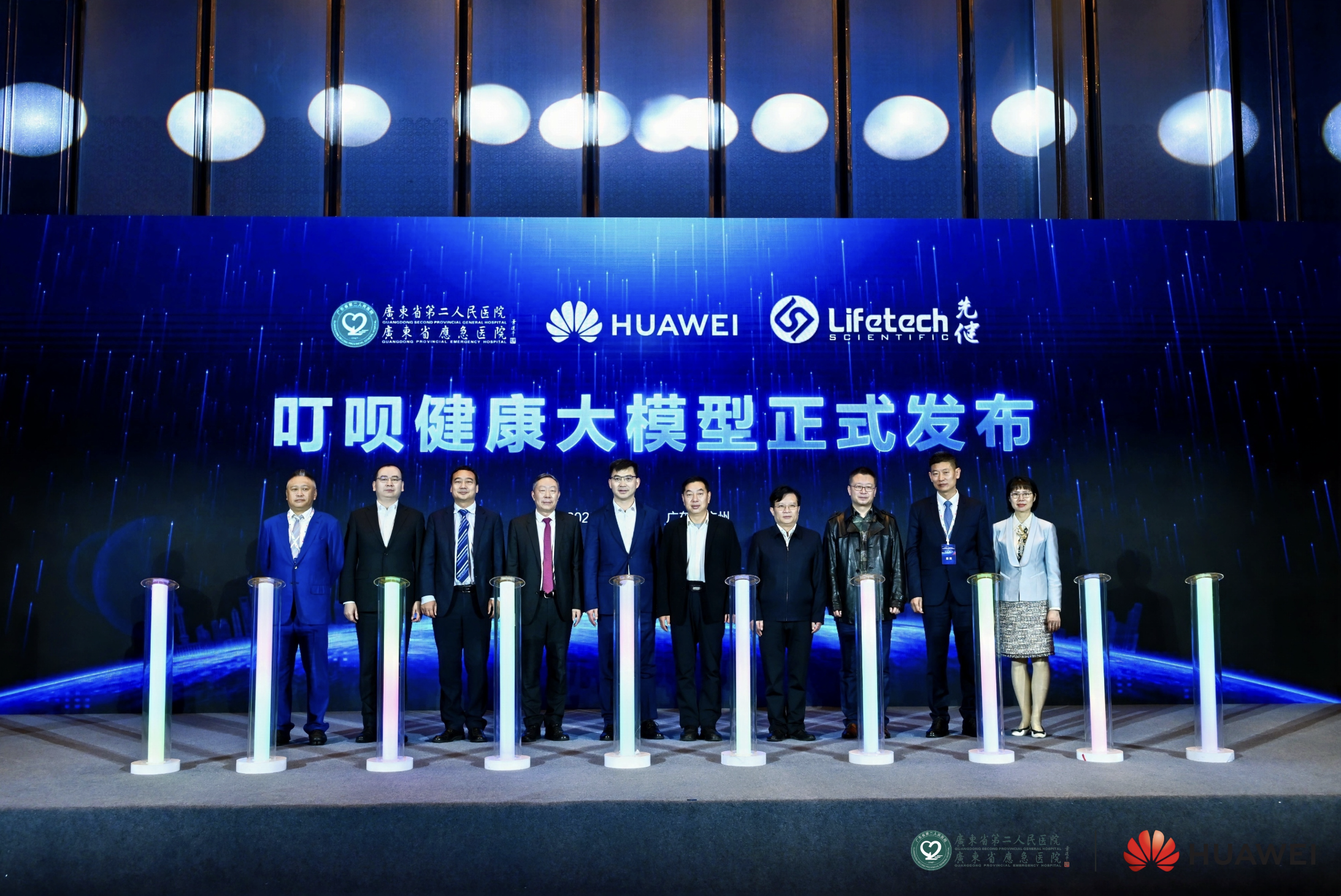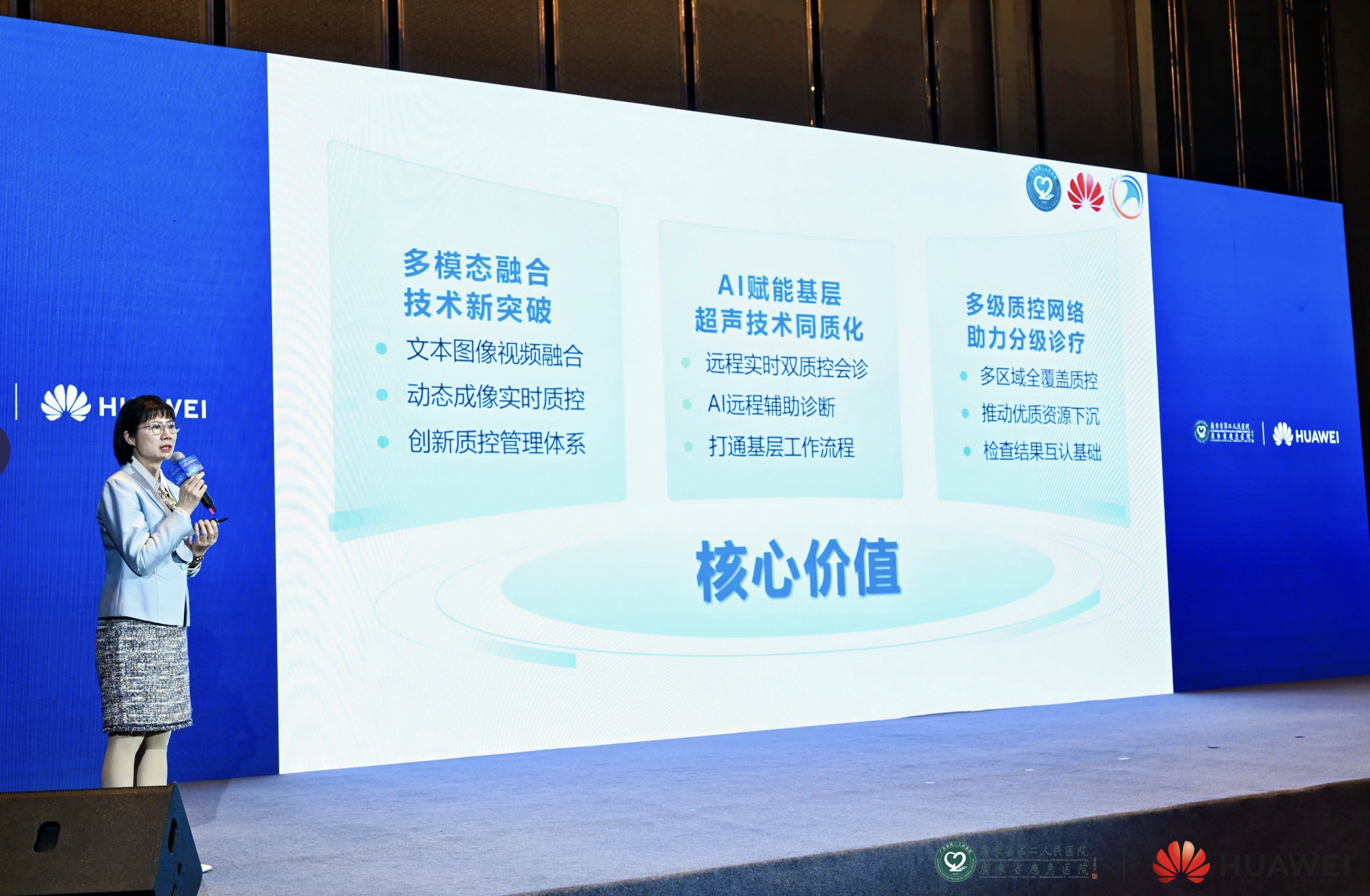
On February 28th, Guangdong Second Provincial General Hospital partnered with Huawei to release the "Dingbei Health Model and Digital Ultrasound Model". The Dingbei Health Model rivals the expertise of a general practitioner, outperforming mainstream domestic and international models in tests. Currently, artificial intelligence (AI) is deeply empowering the medical field, driving the transformation of healthcare services from "disease treatment" to "disease risk factor management". The launch of the Dingbei Health Model marks a significant step into a new era of "health guardianship" in medical AI.

As the first Internet hospital in China, the Guangdong Second Provincial General Hospital has focused on "proactive health" since 2016, dedicating efforts to the field of AI. The concept of "proactive health" follows the "70-30 rule," where nearly 70% of health outcomes depend on good lifestyle habits, while proactive health measures and medical consultations account for only 30%.
Dr. Chen Yin, chief physician of the health management (physical examination) department at the Guangdong Second Provincial General Hospital, explained: "In the past, physical examination reports were entirely manually processed by doctors, taking about 30 minutes per report. A doctor could handle a maximum of 50 reports per day. Now, with the intelligent report analysis function of the Dingbei Health Model, a comprehensive physical examination report can be completed in just one minute, with accuracy reaching the level of an associate chief physician in general medicine. This significantly improves report generation efficiency and greatly reduces waiting times for users."
For those undergoing health checks, this completely overturns the traditional model of waiting for a doctor to interpret the report. On the health management platform of the Guangdong Second Provincial General Hospital, 45-year-old Mr. Wang uploaded his health examination report from this year. With the Dingbei Health Model, AI quickly conducted a comprehensive analysis, providing an urgent risk alert: Mr. Wang's cardiovascular risk level was marked as high, with a mild fatty liver risk also indicated. This report not only accurately identified the causes of risk but also generated a personalized intervention guide, covering aspects from dietary plans and exercise strategies to sleep management.
In terms of medical imaging diagnosis, AI-assisted imaging diagnostic technologies have greatly facilitated doctors' work, featuring capabilities such as lesion identification, rapid localization, classification, image segmentation, data management, and structured reporting.
Liu Hongmei, a committee member and deputy director of the Guangdong Second Provincial General Hospital, explained: "In auxiliary diagnosis, AI models trained on MR and CT images are more common and widely used because these images are mostly static and standardized, leading to high mutual recognition rates of diagnostic results. In contrast, the development of AI for ultrasound is more challenging. This is because ultrasound results are closely tied to the operator's proficiency, and there is a lack of a standardized quality control system. As a result, manual quality control is inefficient, and the mutual recognition rate of diagnostic results remains low."
To break through the single-use limitations of traditional large language models, the Guangdong Second Provincial General Hospital has developed a leading mobile management model for ultrasound in the country. By employing the Digital Ultrasound Model, a three-tier quality control network is being established across provinces, cities, and counties, ensuring that grassroots doctors receive not only AI-assisted diagnosis but also AI quality control support.
Currently, the multimodal Digital Ultrasound Model is widely applied in the diagnosis of diseases such as thyroid and breast conditions, achieving dynamic image and text report linkage quality control with an error detection rate exceeding 95%, ensuring diagnostic accuracy. In the future, this model aims to cover 13 organs and 112 ultrasound sections, bringing a new era of intelligence and precision to ultrasound diagnostics.
Source: Lingnan On the Cloud
AI解锁“疾病风险因素管理”!探秘广东医疗界的“健康预言家”
2月28日,广东省第二人民医院(以下简称“省二医”)携手华为发布“叮呗健康大模型与数智超声大模型”。叮呗健康大模型在专业程度堪比全科医生,在测试中拔得头筹,超越国内外主流大模型。当下,AI深度赋能医疗领域,推动医疗服务从“疾病治疗”向“疾病风险因素管理”转型升级。叮呗健康大模型落地,标志着医疗AI大步迈入“健康守护”的崭新时代。
省二医作为全国首家互联网医院,在2016年便以“主动健康”为着力点,全力聚焦人工智能领域。所谓“主动健康”,遵循“三七定律”,即近七成取决于良好的生活方式,而主动投入健康措施与主动就医仅占三成。
省二医健康管理(体检)科总检医生陈尹介绍:“过去,体检总检工作全靠医生手工操作,出具一份报告约需30分钟,一位医生每天最多只能处理约50份报告。现在,运用叮呗健康大模型的智能总检功能,短短1分钟就能完成一份完整体检报告分析,精准度更是达到全科医学副主任医师以上专业水准,大幅提升报告生成效率,显著缩短用户等候时间。”
对于体检人群而言,这彻底颠覆了以往坐等医生解读报告的传统模式。在省二医的健康管理平台上,45岁的王先生上传了自己今年的体检报告。借助叮呗健康大模型,人工智能迅速展开综合分析,一份风险提示赫然呈现:王先生的心血管风险等级为高风险,同时还有轻度脂肪肝的风险。这份报告不仅精准标注了风险成因,还生成了个性化干预指南,从饮食方案、运动计划到睡眠管理,面面俱到。
在医学影像诊断领域,AI智能影像辅助诊断技术极大便利了医生诊疗工作,具备病灶识别、快速定位、分类、图像切割、数据管理、结构化报告等诸多功能。
省二医党委委员、副院长刘红梅介绍:“在辅助诊断中,基于MR片、CT片训练出的AI较为常见且应用广泛,因其图像多为静态、标准化,诊断结果互认率高。但相比之下,B超AI开发难度更大,因为B超检测结果与操作人员规范程度紧密相关,同时缺乏标准化质控体系,存在人工质控效率低以及诊断结果互认率低的问题。”

为突破传统大语言模型应用场景单一局限,省二医打造出国内领先的超声移动管理模式。通过数智超声大模型,将建立省-市-县三级质控网络,使基层医生在获得AI辅助诊断的同时,还能得到AI质控支持。
据了解,目前多模态数智超声大模型已在甲状腺、乳腺等疾病诊断中广泛应用,模型实现动态影像与图文报告联动质控,误差检出率>95%,确保了诊断的准确性。未来,该模型将覆盖13个脏器、112个超声切面,为超声诊断领域带来智能化、精准化的全新变革。
文、图丨张华 周颖怡 朱健
翻译丨黄宇洁
审校丨赵凡
-
Guangzhou's Aotou Town: a pastoral getaway chasing the wind and dreams
2025-03-01 21:32:51 -
Vibrant Guangdong | Another technological marvel in Guangdong: a space station to be built 2000 meters deep in the ocean
2025-03-01 21:33:38 -
Poster丨Visit Xiaoshan Village in Spring: Pink and Purple Flower Balls Welcome Guests!
2025-02-28 21:35:44 -
The first large-scale Chinese-style live show becomes Spring Festival sensation
2025-02-28 22:45:40






